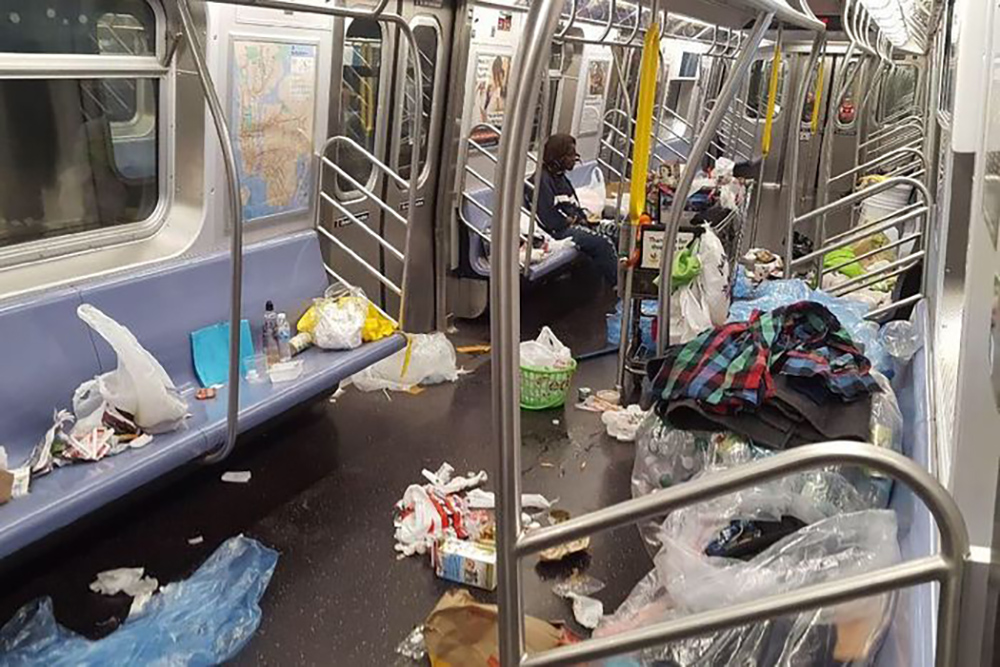By: Ilana Siyance
New Yorkers with no place to call home have been riding and sleeping on mostly vacant subway trains. While this is not the first time in NYC history that subways have become a haven for homeless people looking for an indoor place to rest, the current shift is sparking public health fears, and causing the subway system to shut down nightly for cleaning.
As reported by the NY Times, ridership on NYC subways is down 92 percent, and the mostly empty cars have become inviting to the city’s homeless population. Many of the trains now feature unkempt figures sleeping in the seats for extended rides. While this would never be seen as pleasant, during the coronavirus pandemic its impact is even more critical. Many of these passengers have no access to medical care or proper hygiene and can become a health hazard for commuters and train employees.
In response, the city has taken an unusual step—closing down the subway system nightly from 1 a.m. to 5 a.m. for deep cleaning. The closures will begin on Wednesday, for the subway system that has become known for never closing. The change will not only allow time for the trains to be disinfected and restore public confidence in public transportation, but it will also force the homeless population to find a different place to sleep. The final decision was made on Thursday by transit officials together with Gov. Andrew M. Cuomo and Mayor Bill de Blasio.
Both the Governor and Mayor said they would work to help the homeless find shelter. “It’s an unacceptable reality and this new plan will disrupt that unacceptable reality and allow us to actually get help to people more effectively,” Mr. de Blasio said.
Currently, the shelters where the government wants the homeless to stay provide single adults dormitory-style rooms where they sleep just a few arms’ lengths away from one another. Over 60 homeless people have died due to coronavirus. Three out of every four of those casualties were single adults who had stayed in shelters where numerous people shared rooms and bathrooms. Many of the homeless refuse to go to the shelters, saying they are unsafe. The city has been trying to alleviate the health risk at shelters by transferring thousands of homeless people into hotel rooms that are vacant due to the city’s shutdown and the lack of tourists.
Providing shelter for the homeless remains a priority, however, it is exceedingly clear that the lodging cannot be sought on subways. Close to 100 Metropolitan Transportation Authority employees have died from coronavirus. The casualties of bus drivers and train operators outweigh casualties in almost all other work fields. These employees work in the confined indoor space, exposed to numerous people gripping the same metal poles. Currently, cleanup crews have only 10 to 15 minutes to disinfect cars before a train turns around. David Duarte, is a cleaner at the Stillwell Avenue Station in Brooklyn’s Coney Island, one of the largest elevated terminals around the globe. He said that he and four co-workers started putting on hazmat suits, masks and gloves before work. “There can be feces, urine, a lot of trash,” said Duarte. “The more homeless are in there, the harder it is to clean the train.”
Sarah Feinberg, the interim president of New York City Transit, said in a statement that “the subway system should not be used as a substitute for shelter.” “It’s not good for our customers, it’s not good for our workers, and it’s not good for homeless New Yorkers who deserve much, much better care,” she said.




